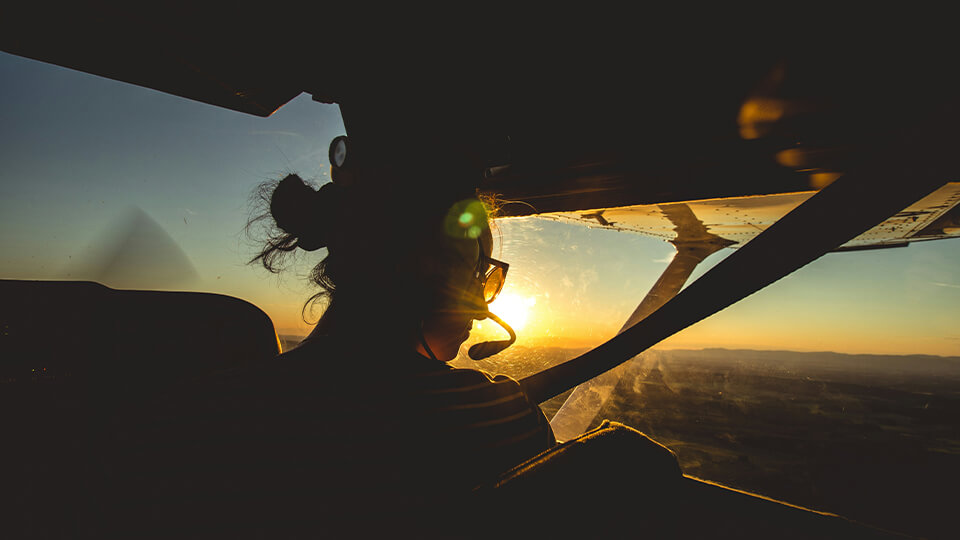In an industry long dominated by tradition and technical expertise, a quiet revolution is underway. Women across the Middle East are not just entering aviation, they're reshaping its future.
While global statistics still reflect a stark gender imbalance - just 5.1% of airline pilots and under 9% of aerospace engineers in the region are women - the UAE offers a view of progress. With nearly 27,000 women employed in aviation, they now represent 42% of the sector’s workforce. Yet, female leadership remains elusive.
Odgers Aviation Practice has seen first-hand the growing demand for female talent in senior roles. Clients are asking for diverse shortlists. The challenge? It’s not just regional - it’s global. That’s why we’re committed to amplifying the voices of women in aviation and sparking meaningful conversations about representation, leadership, and change.
In the third article of our Women Leaders in Aviation series, we speak with Dr. Zeina Mehyou and an aerospace communications leader to explore how women are transforming aviation leadership.
Read our previous article, How Women are Shaping the Future of Middle Eastern Aviation, where the former Executive Director of Aviation Strategies and International Affairs at the UAE General Civil Aviation Authority and former Chief Commercial Officer, Abu Dhabi Airports, share their industry insights.
Dr. Zeina Mehyou is Deputy CEO for Academic Relations, Governance, and Student Experience at the Intercontinental Aviation Academy (IAA), a global aviation training institution. She plays a pivotal leadership role in shaping the academic strategy, student engagement, and institutional governance across IAA’s global training network, under the umbrella of its parent company, Intercontinental Aviation Enterprise (IAE).
The communications leader is a highly regarded aerospace comms professional, working across the Middle East, Turkey and Africa.
Journey into Aviation and Inspiration
Dr. Zeina comes from a strong academic background, with over two decades of experience in education, research, and university administration. She held senior roles such as Director of Public Health and Assistant Dean, where she was responsible for restructuring departments, setting academic policies, and leading institutional transformation. Her entry into aviation was not planned - she was brought in to help restructure and elevate the academic standards of an aviation academy.
Her role was to bridge the gap between technical aviation training and academic rigor, bringing a fresh perspective as a woman and an academic.
She emphasised that her contribution was not just administrative but also strategic, helping to align academic, safety, and operational departments.
The aerospace comms leader entered the industry three years ago after being approached for a regional comms role within a major aviation organisation. Although they had no prior experience in aerospace, their background in manufacturing and B2B communications proved highly relevant. What truly resonated was the sector’s vital role in connecting people and enabling global commerce, particularly in the Middle East, where aviation continues to be a powerful driver of economic and cultural exchange.
Biggest Challenges Encountered
Dr. Zeina highlighted several obstacles faced in her professional journey. In male-dominated environments, particularly in technical and operational roles, she observed that women often feel compelled to work harder to gain recognition and respect. Coming from a non-aviation background, she had to dedicate significant time to learning technical aviation concepts to establish credibility and effectively lead her team. Although she did not personally encounter overt discrimination, she acknowledged the presence of subtle cultural biases and highlighted the ongoing pressure women face to continually prove their competence in the industry.
The comms leader explained one of the key challenges is the widespread perception of the aerospace industry roles being limited to pilots, cabin crew, and engineers, with little awareness of the diverse opportunities available. They also noted the underrepresentation of women in engineering and commercial functions.
Effective Initiatives and Programs Supporting Women in Aviation
At her institution, Dr. Zeina described a range of inclusive and supportive practices aimed at fostering a welcoming environment for all. She also prioritises the use of gender-inclusive language in public communications and ensures that women are prominently represented in marketing materials and campaigns.
To support new female cadets, the institution pairs them with mentors - either female staff members or senior students - to help build their confidence and sense of belonging in a male-dominated field. As a senior leader, Dr. Zeina serves as a visible role model, demonstrating that women can thrive in high-level aviation roles without compromising their identity.
The aerospace communications leader described several initiatives aimed at advancing gender diversity within the sector. These included partnerships with non-governmental organisations to promote STEM education, targeted programs supporting women returning to the workforce, and internship schemes designed to ensure balanced gender participation.
Identifying Rising Stars and Talent Shortages
The leaders’ approach to identifying high-potential employees is grounded in a few core principles. They value individuals who demonstrate an ownership mentality, i.e. those who treat the organisation as their own, consistently showing initiative and dedication beyond their formal roles.
Commitment and passion are also key indicators, with standout employees being not only hardworking but deeply invested in the institution’s mission.
However, the leaders have observed a decline in the overall quality of graduates in recent years, which they attribute to the shift to online education during the pandemic and broader socio-political instability in the region. This has resulted in noticeable gaps in both technical competence and soft skills among younger professionals.
Tips for Entering the Aviation Field
The aviation leaders outlined the following practical tips:
- Develop your technical and analytical skills. Even if not in a technical role, understanding aviation fundamentals is crucial for growth and influence in any role.
- Stay authentic. The leaders emphasised that women should not feel pressured to mimic negative leadership styles. Empathy, care, and emotional intelligence are strengths that should be preserved and valued.
- Network strategically. Sustaining personal and organisational growth within the aviation industry would not be possible without building the right professional network. Look long-term and connect intelligently.
The journey toward gender equity in aviation leadership is far from over, but it’s gaining momentum. If you're passionate about driving change, supporting emerging talent, or simply want to learn more, connect with our team.
________________________________________________________
Get in touch. Follow the links below to discover more, or contact our dedicated Aviation leadership experts from your local Odgers office here.

Never miss an issue
Subscribe to our global magazine to hear our latest insights, opinions and featured articles.
Follow us
Join us on our social media channels and see how we're addressing today's biggest issues.




